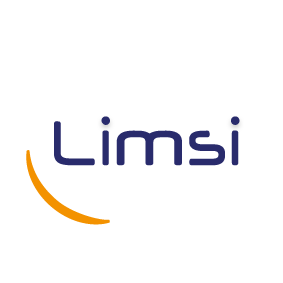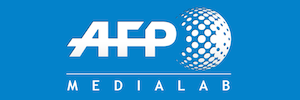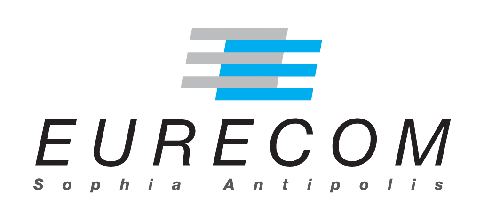Template Acquisition for Open Event Extraction
ANR Project 2016-2019
(ANR-15-CE23-0018 ‐ Acquisition de Schémas pour la Reconnaissance et l'Annotation d'Événements Liés)
Main contact: Xavier Tannier (Univ. Paris-Sud, LIMSI-CNRS)

Main contact: Xavier Tannier (Univ. Paris-Sud, LIMSI-CNRS)
Information and communication society led to the production of huge volumes of content. This content is still generally non-structured (text, images, videos) and the promises of a "Web of Knowledge" are still long ahead. This situation evolves with the development of Open Data portals or resources such as DBPedia, that have made easier the access to information stored in databases (economic or demographic statistics, world knowledge contained in Wikipedia infoboxes, etc). However, most of the knowledge is still produced by textual data. Among the information concerned by the difficulty of accessing textual data, those related to events are of great interest, notably in the context of the emergence of data journalism. Data journalism has been fed until now by publicly available, statistical data, but it has paradoxically made only little use of the very journalistic materials that are events. The project ASRAEL aims at bridging this gap.
Our proposal comes within the scope of the general scientific framework of information extraction (IE). We aim at extracting events from a large set of textual documents, without prior knowledge about them, and at populating and publishing a knowledge base of events. This knowledge base will be the support of a dedicated event search engine.
We define event in a traditional information extraction way. An event is a structured representation of something that happens, with a nucleus, a spatio-temporal context and some arguments. The "event type" gathers comparable instances of events, as "earthquake", "election" or "car race". Arguments are attribute/value pairs that characterize an event type (for an earthquake, its location, date, magnitude, casualties...). A template is the set of arguments that can describe an event type (earthquake template, election template). The generic representation of an event is based on the rule of the "5 Ws" (What, Who, Where, When, Why) that prevails in the "Anglo-Saxon" way of writing articles. This rule stipulates that a good description of an event must make these five elements explicit.
In automatic information extraction, the information about "Who", "Where" and "When" are extracted by a traditional and quite generic named entity recognition approach. On the other hand, the "What" is very domain-specific. For this reason, traditional IE systems lean on templates predefined by experts and identify events in texts with either rule-based systems or statistical models. However, in the general domain, where the huge number of possible events makes the manual definition of these templates impossible, information retrieval ("bag of words") methods take over, but do not provide a structured answer.
In this project, we aim to tackle the following challenges:
Tasks 2, 3 and 4 are intended to automatically discover the schemas (sets of attributes/values) corresponding to events and, in parallel, to build the instances of these schemas by annotating the documents, for the creation of the search engine in task 5. The first attributes explored will be the generic attributes, in particular dates and locations (task 2), then the others (task 3). Task 4 describes how the knowledge base will be populated and the documents annotated by the template put in place.
The seeds of this schema discovery process are names representing types of events. These names will be extracted from the list of International Press Telecommunications Council (IPTC) categories, a very complete hierarchy that is already the entry point of the existing event search engine at AFP. This hierarchy contains theme names, many of which are event names (for example, "road accidents" is a subtype of "transport accidents", itself a subtype of "disasters and accidents"). All themes are codified and internationalized.
Even though the global event representation framework is already defined (kernel and arguments in the form of attribute/value pairs), a preliminary step will be to design the structure and content of the event database. This effort goes first and foremost by a thorough reflection on the modeling of the events and in particular on the types of attributes, their granularity, their evolution over time. Events can be interrelated with causal relationships. They can also belong to series (e.g. the Olympic Games, Grammy Awards). An ontology on media events will be created at the beginning of the project, taking into account the needs expressed by the journalists and exchanges between the Medialab AFP and the scientists of CEA LIST, LIMSI and EURECOM. The partners will be able to rely in this field on the knowledge acquired by the Medialab AFP during the European projects Glocal (search and indexing of events, XML modeling) and French SCRIBO (semantic web), as well as those of EURECOM (EventMedia project and animation of the dedicated schema.org community)
The definition of a structured basis of events also depends on the definition of its implementation, that is to say the choice of a representational formalism. As this base evolves as new types of events and events are discovered, the use of a triplestore is ideal. A flexible data model as defined by OWL will allow to add new attributes for the definition of event schemas, to make SPARQL queries, implying in some cases inferences, to use the taxonomy IPTC categories (Subject, Matter, Details) and to support multilingualism ("Putin", "Poutine"...). In the ontology model, a type of event will be a class and the attributes of the template of that type of ObjectProperty or DataProperty. Finally, lists of authorities (e.g. event categories) will be represented in SKOS to allow the same type of query. The search engine (Task 5) will use these attributes for constructing the index with attributes of event types as facets. The documents will be related to the ontology through the events that will be extracted and their constituents. We can also use the ontology to make inferences about indexed resources and exploit their results in full text search: the documents resulting from this search can for example be filtered or grouped according to types of events or entities inferred and not directly explained within them. We will use Virtuoso tools (for querying structured data in SPARQL), ElasticSearch and Solr (for full-text querying of data) as we have experienced in the HyperTED project.
In order to get closer to the standards of AFP and IPTC, the processed documents will be exported in NewsMLG2 format. This will make it easy to associate metadata about events to each document, but also to annotate the HTML content of the document with micro-formats (RDFa or Microdata using the rNews and schema.org vocabularies). An OSGI content annotation string will allow the industrialization of the different components of the project with the flexibility to use other software. Moreover, we will also keep the traces of the induction process that led to each iteration to the content of the database, including the probability values resulting from induction, in order to be able to filter the information according to their degree of reliability (or of confidence).
This task represents the second logical step in building a structured event base. It takes into account two forms of population of such a base: on the one hand, an initial population from a large body of news, linked to the discovery of the types of events present in this corpus; on the other hand, the taking into account of new articles for the continuous supply of this base.
This Task 5 aims to implement the search engine from annotated schemas and documents, results of Tasks 3 and 4. As mentioned above, querying this search engine will be done by using structured queries (an event type and constraints on attribute values), with a structure depending on the type of event. This engine will be integrated with the existing tool at AFP, namely a web interface (AFP-4W) calling the search engine Lucene via Solr; the goal of the project is to obtain a functional and testable prototype by AFP journalists, it will be necessary to manage the daily flow of new documents. In addition, a version of this engine will also be provided for corpora of web pages.
The evaluation processes for each of the steps described above have been grouped into this task. Indeed, if each evaluation methodology has its specificities, the same subset of event types will be selected and will be used throughout the project for the evaluation. These types will be chosen for their representativeness, but also for their respect of the maximum of criteria above:
The evaluation of the acquisition of the schemas is carried out very imperfectly in the literature, by using corpora dedicated to the extraction of supervised information. Since the schemes and the induced roles are not generally named, part of the corpus is used in a supervised way to associate the schemas of the reference with the induced schemas. At the same time, we evaluate the induction, this final association, and the annotation of the documents. In our project, on the contrary, we wish to separately evaluate the diagrams produced and the annotation of the documents.
SourceExtractor is a CRF-based tool for extracting primary and secondary sources from news articles in French. It detects primary sources, secondary sources, performs coreference resolution on sources, and detects anonymous sources. It can produce Brat format for visualization or JSON format for a machine-readable output.
The code has been refactored in order to expose source extraction as a web service. This is a Spring Boot application deployed in a Docker image.
Tools for building the ASRAEL news KB including news collector (converting AFP XML press releases in RDF following the rNews ontology), named entity annotator (using ADEL), source annotation (using the LIMSI source extractor)
ASRAEL search engine user interface for exploring news content, and annotations, filtered by induced schemas

Project Coordinator (team ILES). LIMSI's research fields cover a wide disciplinary spectrum from thermodynamics to cognition, encompassing fluid mechanics, energetics, acoustics and voice synthesis, spoken language and text processing, vision, virtual reality.
ILES stands for Information, Written and Signed Language. ILES specifically addresses the analysis, understanding and production of written language, and the modelling and production of signed language.
Members participating in the project group will bring their expertise in Information Extraction, Information Retrieval, Text Mining, temporal analysis and event analysis. This expertise has been validated by a number of publications in the field and several projects (including ANR ChronoLines). Furthermore, the evaluation methodology, another field of expertise in the team, is an integral task of this project.
Main contact: Xavier Tannier

CEA LIST institute carries out research on digital systems. Its R&D programs, all based on major economic and social implications focuses, deal with advanced manufacturing, embedded systems, ambient intelligence and ionizing radiation control for health applications.
Our knowledge engineering department develops non structured data automated analysis and description tools for knowledge extraction and delivery to the user under the form of an exploitable synthesis. We work on texts for translation, summary or social networks scanning purposes. We also work on image search and indexation, on documents semantic processing or media flows.
The team LVIC develops an open-source, modular language processing platform, LIMA including named entity recognition, parsing and certain semantic and discursive analysis (in both French and English). It also has expertise in Information Extraction, particularly through an system developed in the field of seismic events, or its participation in the Slot Filling task at the TAC-KBP challenge.
Main contact: Olivier Ferret

Agence France-Presse (AFP) participates in research projects through its R&D unit, the Medialab, composed of engineers and techies journalists. His role in the project is to provide the other partners with multimedia content, voicing of needs, both on the event extraction and on the expected search engine. The AFP Medialab team will be involved in evaluating the various technologies developed during the project and in the dissemination of results to the media industry, on the occasion of seminars, trade shows and conferences.
ASRAEL project will allow AFP to better structure its information content and to make more focused information retrieval into this content. Visualization of data and events should be more relevant, particularly from the AFP4W engine, originally developed during European project GLOCAL and the ANR Project ChronoLines.
Main contact: Denis Teyssou, @dteyssou

EURECOM is a Graduate school and Research Centre in Communication Systems located in the Sophia Antipolis technology park (French Riviera), a major European place for telecommunications activities. EURECOM research teams are made up of international experts, recruited at the highest level, whose work is regularly honored and has earned international recognition.
The group Multimedia Semantics and Interaction aims at providing semantic models for multimedia metadata and user social activity on the web in order to support users complex information needs and interaction, such as exploring large information spaces, gathering heterogeneous and distributed information, or personalizing system behaviour. We massively use Linked Data technologies to perform these tasks.
EURECOM provides expertise in named entity extraction, through the NERD framework, as well as in event modeling in cultural, touristic or media domains (projects EventMedia, 3cixty, collaborations with AFP and IPTC). EURECOM will play a key role in the conception and development of the semantic search engine, reusing certain software components developed within the HyperTED project.
Main contact: Raphaël Troncy
Kiem-Hieu Nguyen, Xavier Tannier, Olivier Ferret and Romaric Besançon.
A Dataset for Open Event Extraction in English.
In proceedings of the 10th Language Resources and Evaluation Conference, 23-28 May 2016, Portorož (Slovenia).
Swen Ribeiro.
Extraction non supervisée de schémas d'événements dans les textes.
Présentation du projet à l'atelier "Journalisme Computationnel", Rennes, 15 mars 2016.
Dorian Kodelja, Romaric Besançon and Olivier Ferret.
Représentations et modèles en extraction d'événements supervisée.
Rencontres des Jeunes Chercheurs en Intelligence Artificielle (RJCIA 2017), Caen, France, 2017.
Julien Plu, Raphaël Troncy and Giuseppe Rizzo.
ADEL : une méthode adaptative de désambiguïsation d'entités nommées.
28th Journées Francophones d'Ingénierie des Connaissances (IC'17), pages 80-85, Caen, France, July 3-7, 2017.
Swen Ribeiro, Olivier Ferret and Xavier Tannier.
Unsupervised Event Clustering and Aggregation from Newswire and Web Articles.
in Proceedings of the 2nd workshop "Natural Language meets Journalism" (EMNLP 2017). Copenhagen, Denmark, September 2017.
Dorian Kodelja, Romaric Besançon, Olivier Ferret, Hervé Le Borgne and Emanuela Boros.
CEA LIST Participation to the TAC 2017 Event Nugget Track. .
TAC Analysis Conference, 2017.
Dorian Kodelja, Romaric Besançon and Olivier Ferret.
Intégration de contexte global par amorçage pour la détection d’événements.
25ème Conférence sur le Traitement Automatique des Langues Naturelles (CORIA-TALN-RJC 2018), Rennes, France, 2018.
Julien Plu, Roman Prokofyev, Alberto Tonon, Philippe Cudré-Mauroux, Djellel Eddine Difallah, Raphaël Troncy and Giuseppe Rizzo.
Sanaphor++: Combining Deep Neural Networks with Semantics for Coreference Resolution.
In 11th International Conference on Language Resources and Evaluation (LREC'18), Miyazaki, Japan, May 7-12, 2018.
Julien Plu, Kévin Cousot, Mathieu Lafourcade, Raphaël Troncy and Giuseppe Rizzo.
JeuxDeLiens: Word Embeddings and Path-Based Similarity for Entity Linking using the French JeuxDeMots Lexical Semantic Network.
In 25th French Conference on Natural Language Processing (TALN'18), Rennes, France, May 14-18, 2018.
Lorenzo Canale, Pasquale Lisena and Raphaël Troncy.
A Novel Ensemble Method for Named Entity Recognition and Disambiguation based on Neural Network.
In 17th International Semantic Web Conference (ISWC'18), Monterey, USA, October 8-12, 2018.
Julien Plu, Giuseppe Rizzo and Raphael Troncy.
ADEL: ADaptable Entity Linking.
In Semantic Web Journal, 2018.